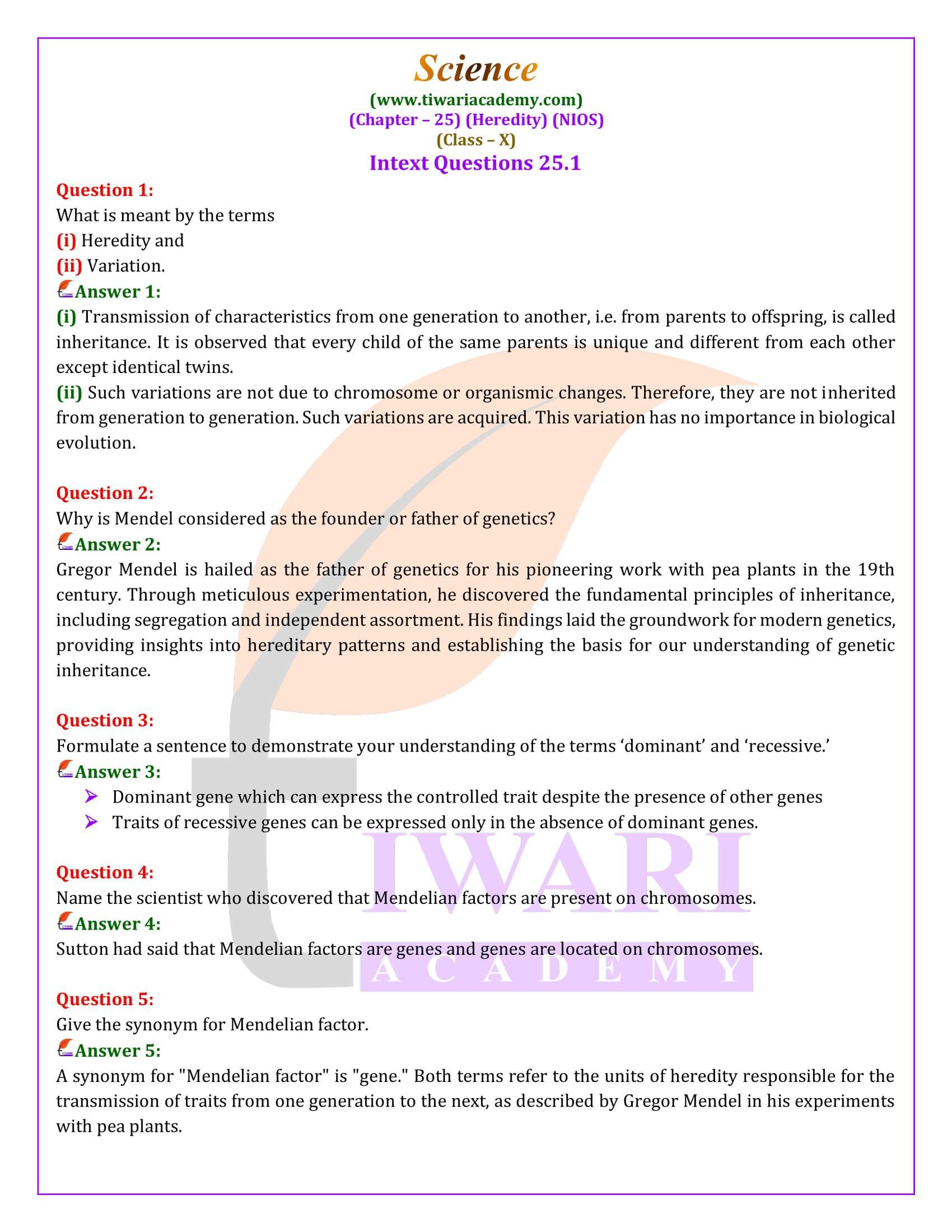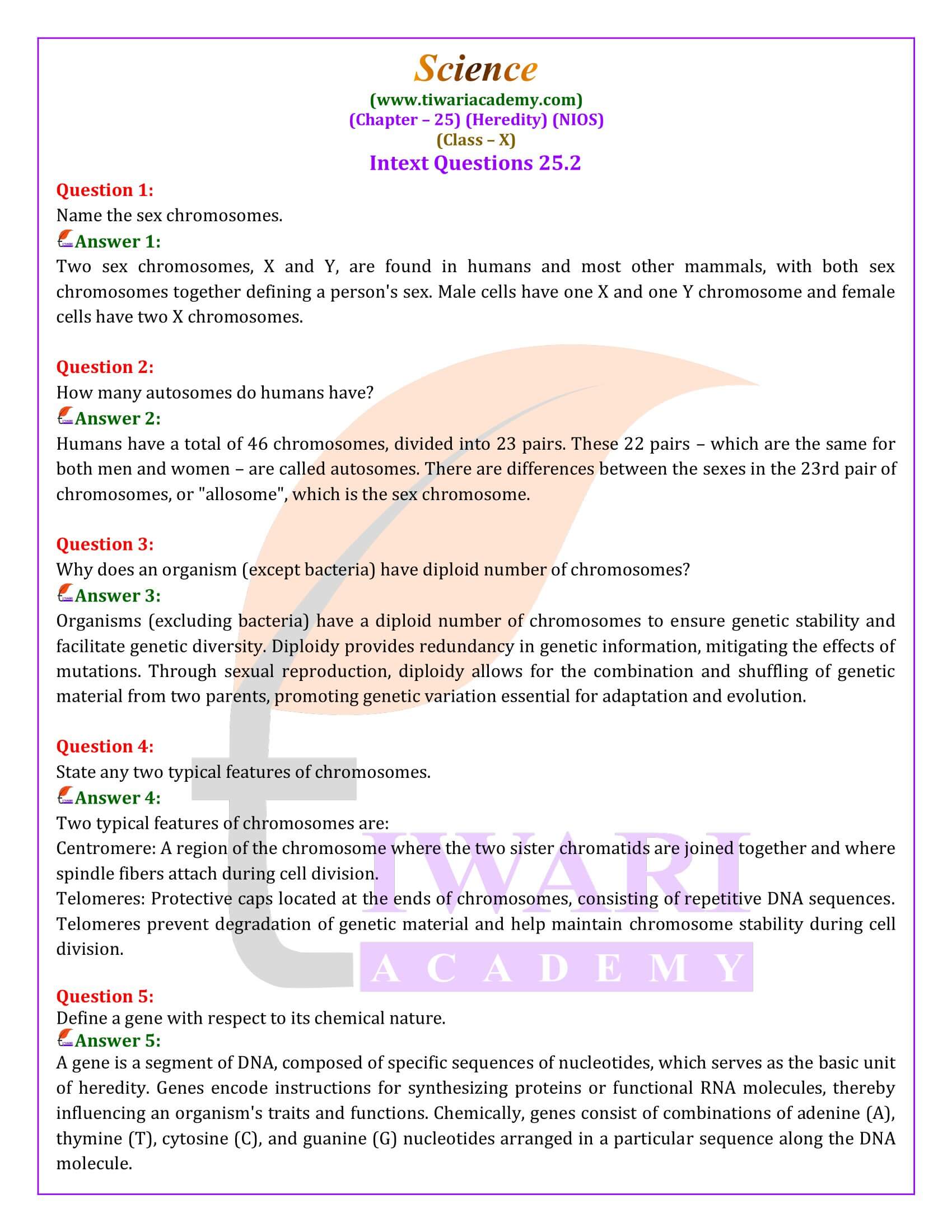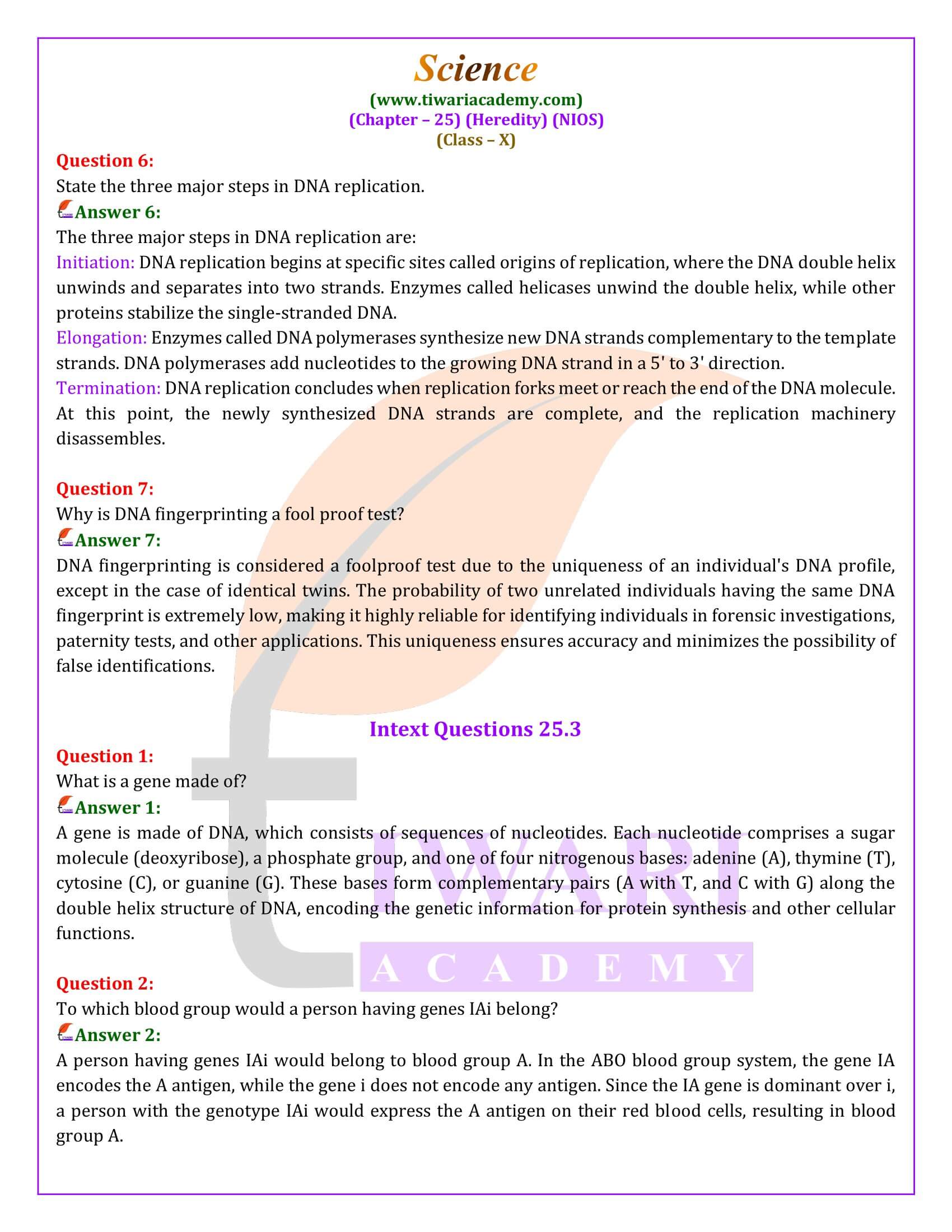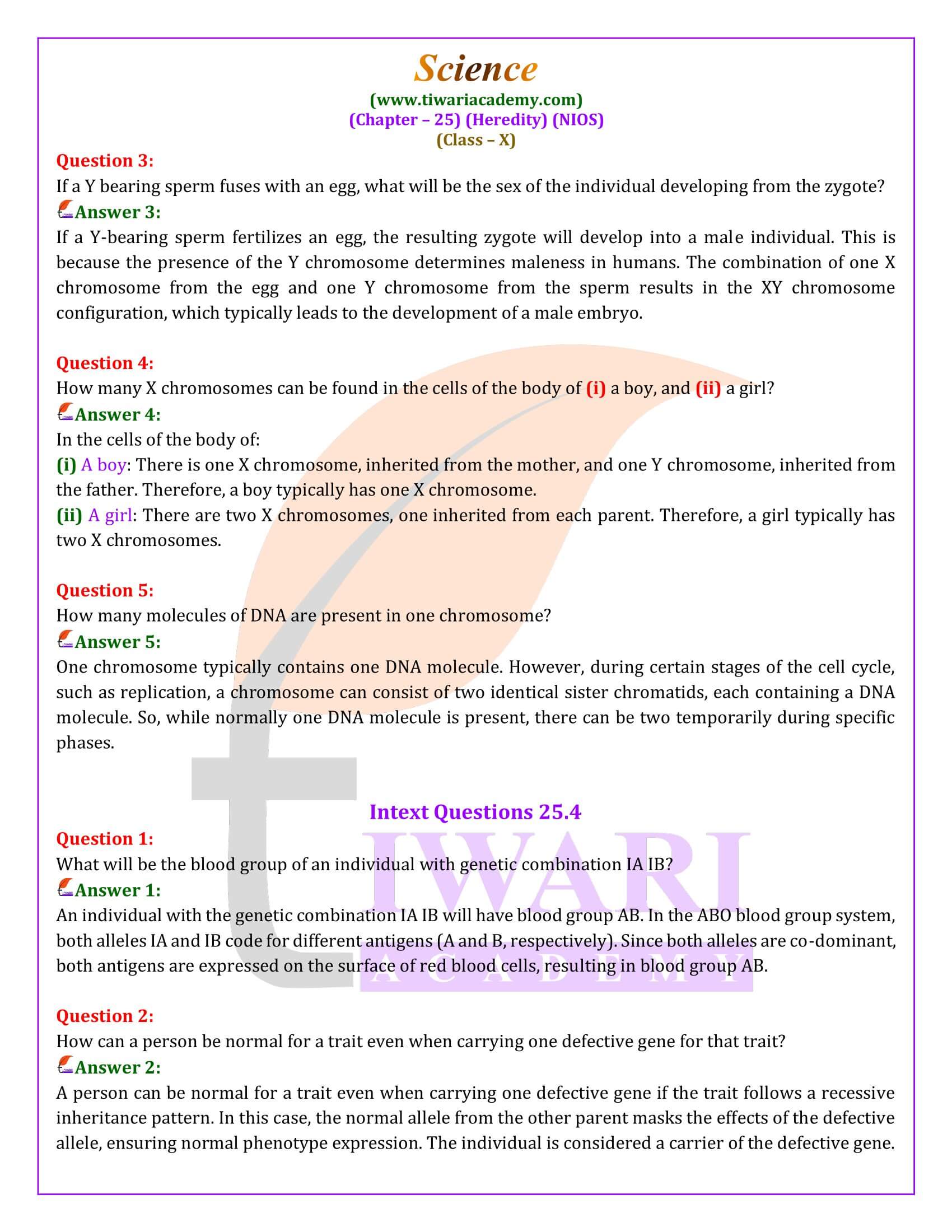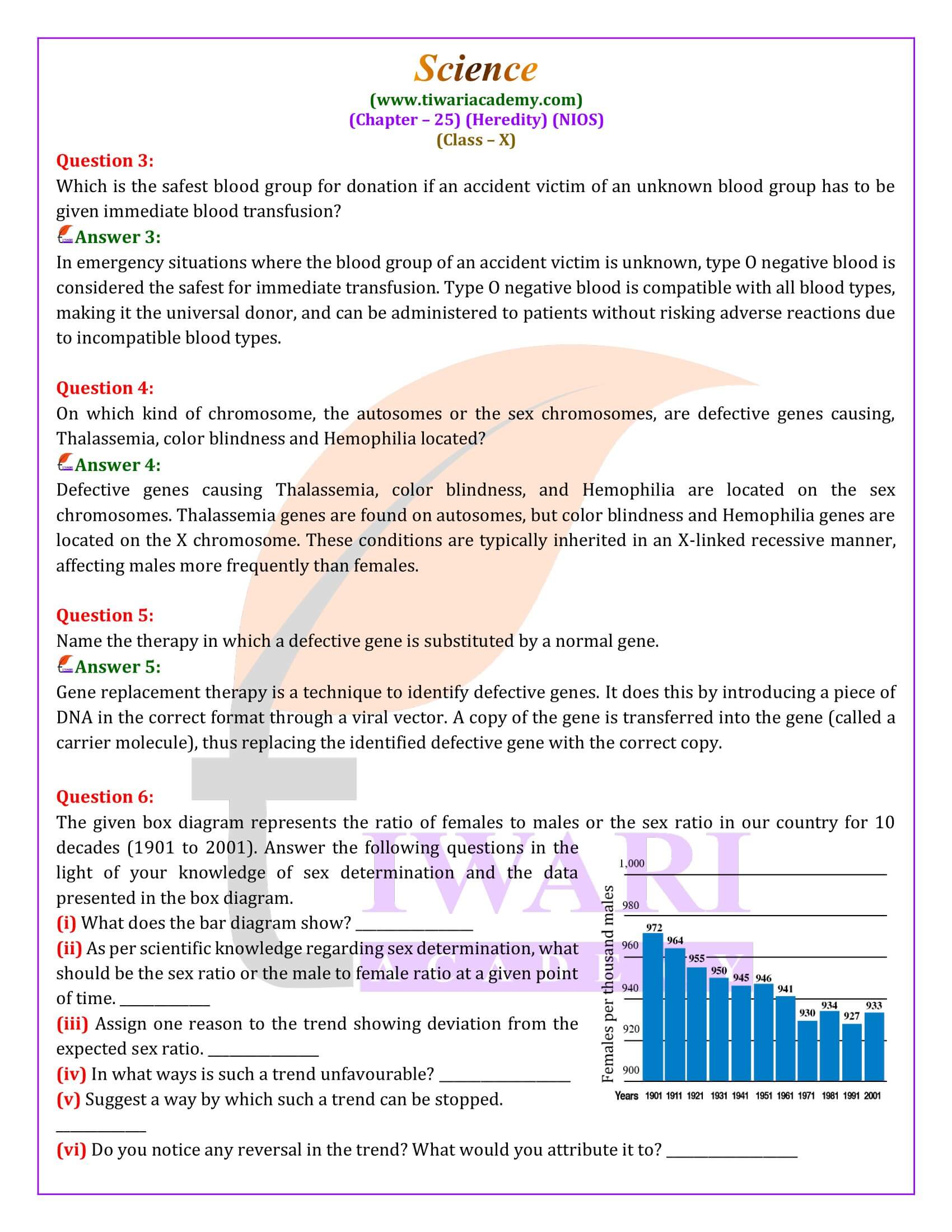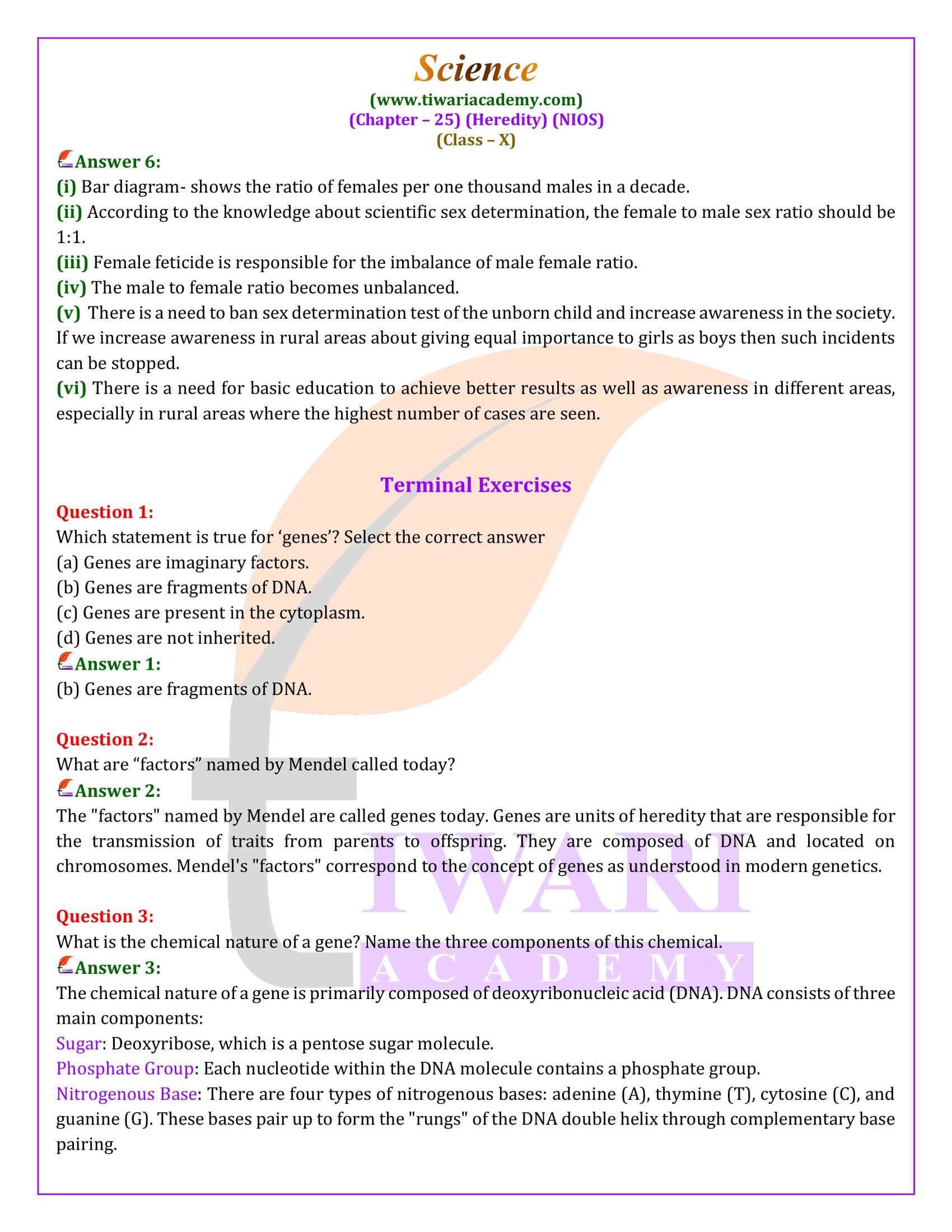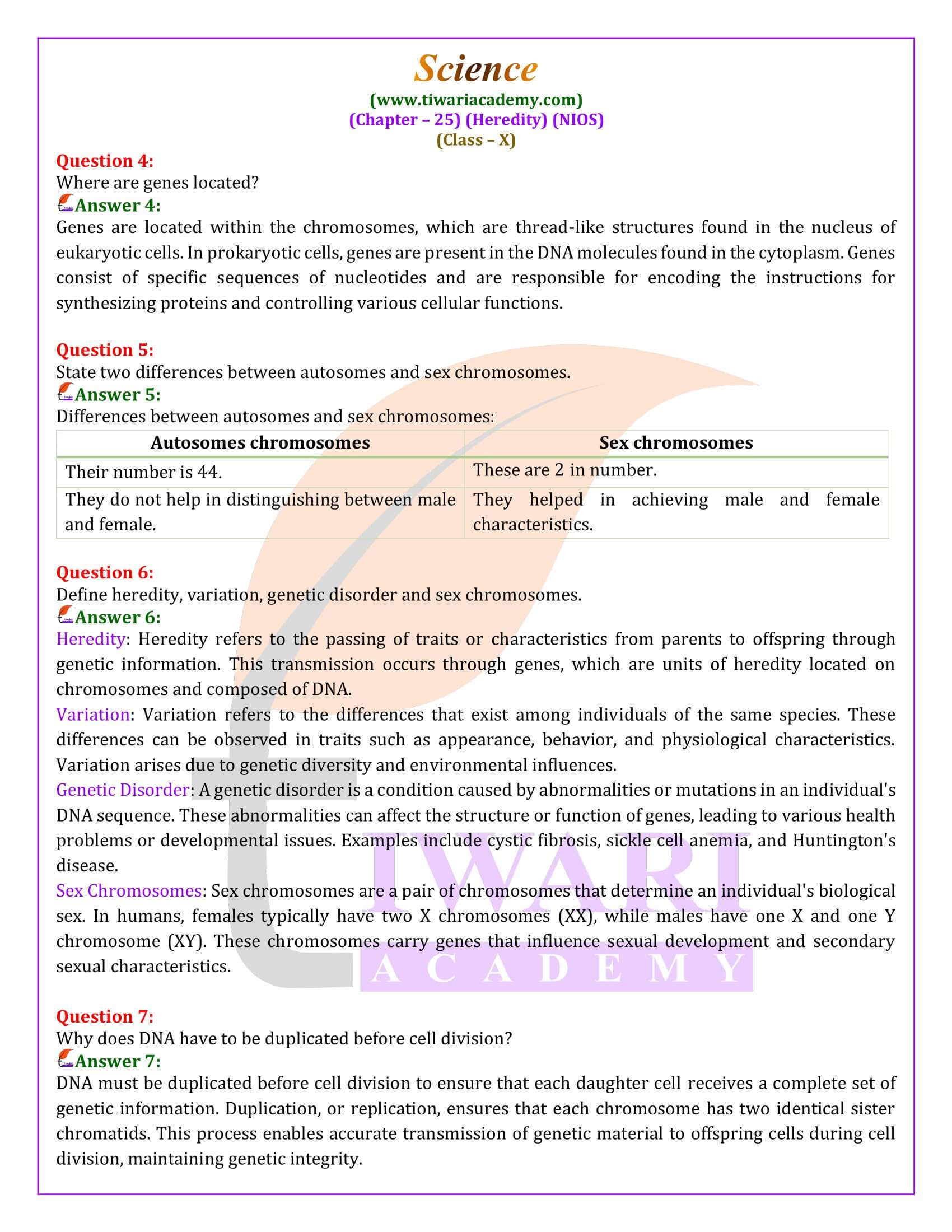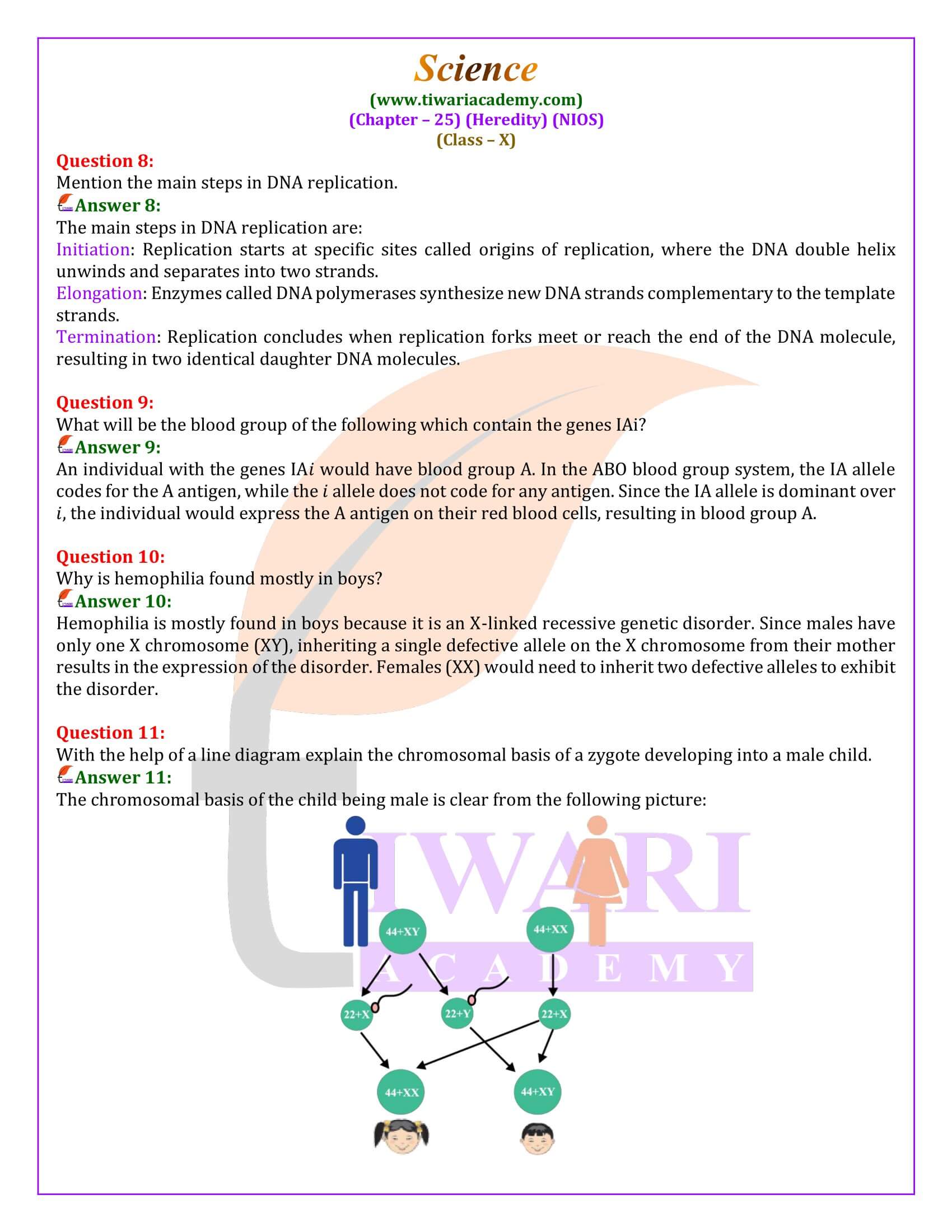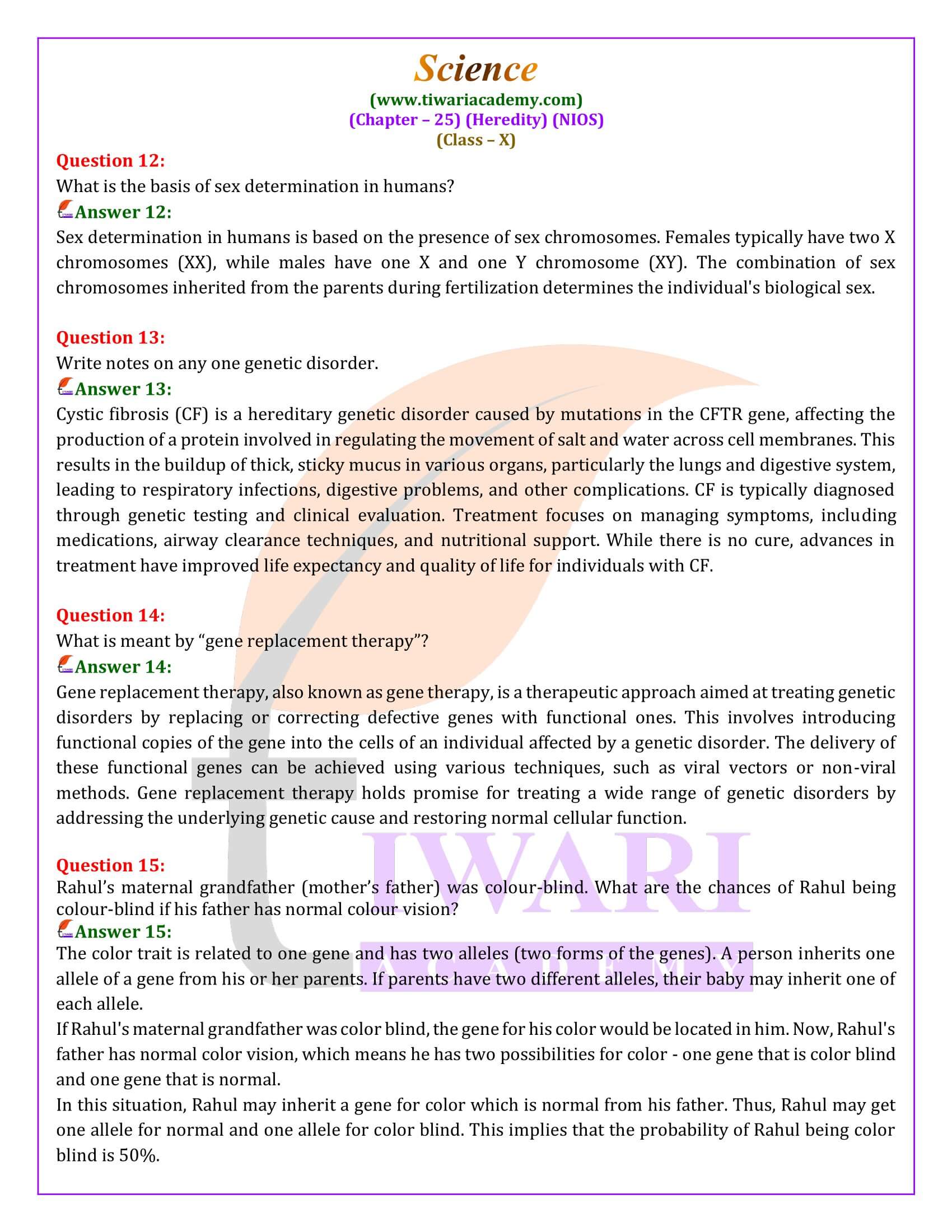NIOS Class 10 Science Chapter 25 Heredity in Hindi and English Medium revised and updated for academic session 2025-26. Students of NIOS can use the question answers given here to prepare class 10 science chapter 25 easily.
Exploring the Fundamentals of Genetics
The chapter 25 of class 10 Science discusses the concept of “Heredity and Variation,” the science of genetics, which examines how traits and characteristics are passed from parents to offspring. Heredity is the biological process where a parent passes certain genes onto their children or offspring. Every child inherits genes from both of their parents, and these genes in turn express specific traits. Some of these traits may be physical for example hair and eye color, while others may be psychological (disease susceptibility and metabolic processes).
Introduction to Heredity
At the heart of understanding heredity is the study of genes. Genes are the basic building blocks of heredity. They are defined as segments of DNA, each forming part of a chromosome. The document explains that every feature or character of an organism is controlled by genes. Variations, however, occur due to differences in gene combinations from one individual to another, which explains why even siblings differ from each other in appearance, behavior, and health.
Mendelian Genetics
NIOS Class 10 Science Chapter 25 elaborates on Gregor Johann Mendel’s experiments with pea plants, which formed the basis of classical genetics. Mendel’s laws of inheritance include the law of segregation and the law of independent assortment. These laws explain how traits are passed from one generation to the next through genetic combinations. Mendel’s work laid the groundwork for understanding genetic inheritance, which was further corroborated by subsequent discoveries that genes are located on chromosomes.
Chromosomes and DNA
The focus shifts to chromosomes, which are long strands of DNA, wrapped around proteins. They are located in the nucleus of a cell and come in pairs. Human cells, for instance, contain 46 chromosomes, half of which are inherited from each parent. NIOS 10th Science Chapter 25 details the structure and function of DNA and chromosomes, including how DNA replicates before a cell divides, ensuring that each new cell receives an accurate copy of the DNA.
Applications and Ethical Considerations
Advancements in genetics have paved the way for DNA fingerprinting, which is a method used to identify individuals based on their unique DNA profile. This technique is invaluable in forensic science, helping to solve crimes by matching DNA found at crime scenes with suspects. The PDF also touches on ethical considerations, such as the implications of genetic testing and the potential misuse of genetic information.
Genetic Disorders and Modern Genetics
A significant portion of NIOS Class 10 Science Chapter 25 is dedicated to explaining genetic disorders such as Thalassemia, Hemophilia, and Color Blindness. These conditions are passed down through families and can significantly affect an individual’s quality of life. Genetic counseling is recommended for potential parents who may be carriers of genes for certain genetic diseases. The document highlights the importance of understanding one’s genetic background to make informed health decisions.
The Future of Genetics
NIOS 10th Science Chapter 25 ends with a discussion on genetic engineering and the human genome project. Genetic engineering, or the manipulation of an organism’s genome using biotechnology, has broad applications, including in medicine, agriculture, and industry. The human genome project, which mapped all the genes in the human genome, is hailed as a monumental achievement that has opened the door to new ways of preventing and treating disease.
The NIOS Class 10 Science Chapter 25 provides a comprehensive overview of genetics from basic concepts to complex applications. It underscores the importance of genetics in understanding life, managing health, and manipulating biological systems for the betterment of humanity. The chapter 25 serves as an educational resource that can significantly enhance one’s understanding of biology and the principles of heredity and variation.
